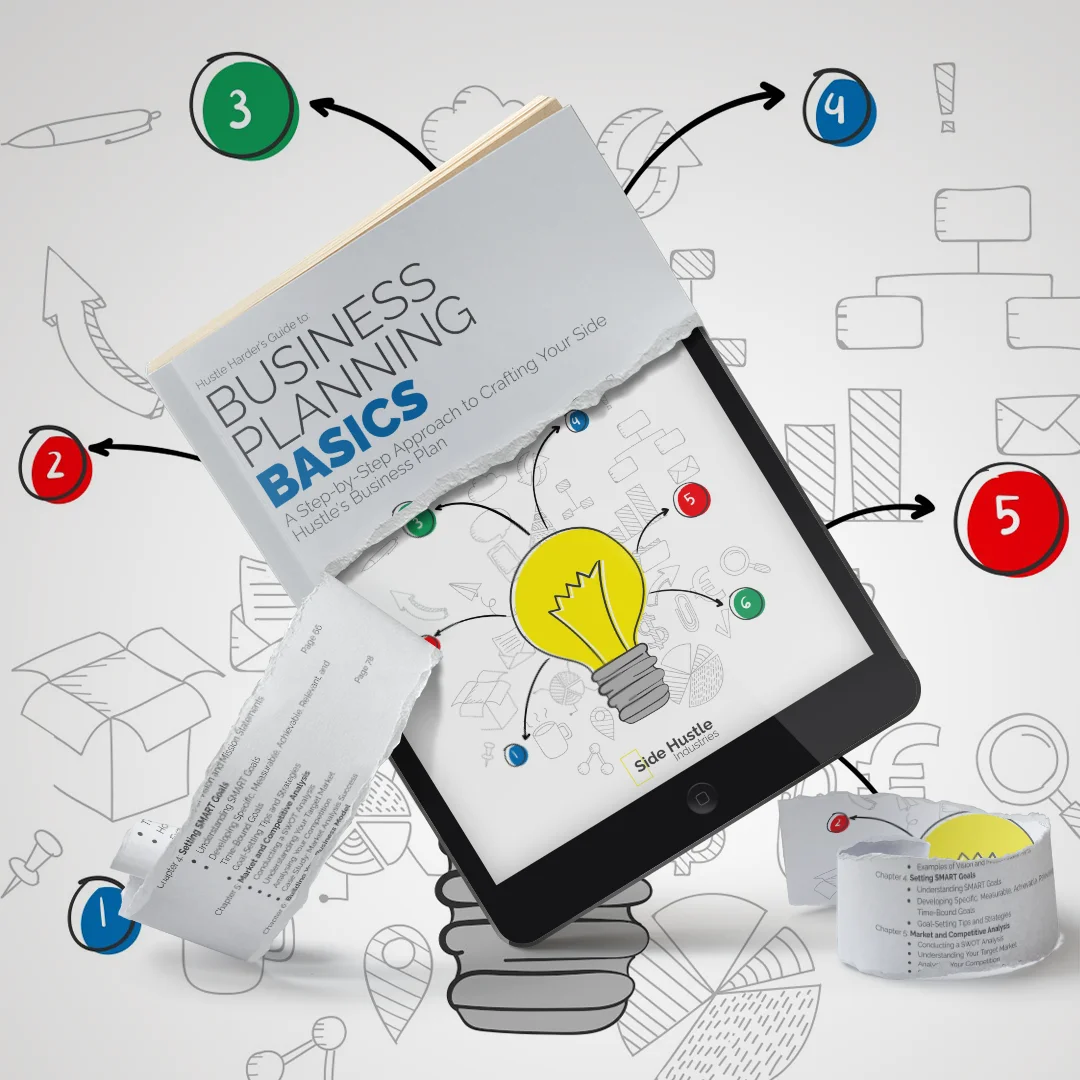
Your business model isn’t complete without a clear plan for generating revenue. Revenue streams and pricing strategies play a crucial role in the financial success of your side hustle or startup. In this article, we will delve into the intricacies of revenue streams and pricing strategies, providing insights on how to choose the right approach for your business.
Understanding Revenue Streams
Revenue streams are the various sources of income for your business. They represent the ways your business monetizes its products or services. Having diverse and well-defined revenue streams can enhance your business’s financial stability and growth potential. Let’s explore some common revenue stream types:
1. Sales Revenue:
Sales revenue is the income generated from selling your products or services to customers. It’s the most straightforward and direct source of income for many businesses. The total sales revenue is calculated by multiplying the number of units sold by the selling price.
2. Subscription Revenue:
Subscription revenue involves customers paying regular fees to access your products or services on an ongoing basis. This model is common in industries like software, streaming services, and subscription boxes. It provides a consistent and predictable income stream.

3. Advertising Revenue:
For businesses with a significant online presence, advertising revenue can be substantial. It’s earned by displaying advertisements on your website, app, or other platforms. Advertisers pay you based on factors like the number of clicks, views, or conversions generated by their ads.
4. Licensing and Royalties:
Licensing and royalties involve granting others the right to use your intellectual property, such as patents, trademarks, or copyrights, in exchange for fees or royalties. This revenue stream is common in the entertainment, technology, and publishing industries.
5. Affiliate Marketing Revenue:
Affiliate marketing revenue is earned by promoting and selling products or services from other companies. You earn a commission for each sale or lead generated through your marketing efforts. This model is popular in the digital marketing space.
6. Rental and Leasing Revenue:
If your business owns physical assets, you can earn rental or leasing revenue by allowing others to use those assets for a fee. Examples include property rentals, equipment leasing, or car rentals.
7. Consulting and Service Fees:
Businesses that offer specialised knowledge or services can generate revenue through consulting and service fees. Clients pay for your expertise, advice, or assistance in various areas.
8. Freemium Model:
The freemium model offers a free basic version of a product or service while charging for premium features or content. This model can serve as both a customer acquisition strategy and a revenue source.
9. Crowdfunding and Donations:
Some businesses, particularly in the creative and non-profit sectors, rely on crowdfunding platforms and donations as a revenue stream. Supporters contribute funds to help the business or its projects.
10. Franchise Fees:
If your business operates as a franchise, franchisees pay fees for the rights to use your brand, system, and support. This can provide an ongoing source of income for your business.

Choosing the Right Pricing Strategy
Your pricing strategy directly affects your revenue and profitability. Selecting the right approach requires an understanding of your market, costs, competition, and customer expectations. Here are some common pricing strategies:
1. Cost-Plus Pricing:
Cost-plus pricing involves setting prices by adding a markup to the cost of producing a product or delivering a service. It ensures you cover your costs and achieve a desired profit margin. This approach is common in industries with high production costs, like manufacturing.
2. Competitive Pricing:
Competitive pricing is based on the prices charged by your competitors. You aim to align your prices with the industry average or offer a slight discount to gain a competitive edge. This strategy is effective when customers perceive products or services as similar across providers.
3. Value-Based Pricing:
Value-based pricing focuses on the perceived value of your product or service in the eyes of the customer. You set prices based on the benefits, features, and solutions your offering provides. This strategy is particularly effective when you can differentiate your product as premium or unique.
4. Skimming Pricing:
Skimming pricing involves initially setting a high price for a product or service and gradually lowering it over time. This strategy is often used for new or innovative products, capitalising on early adopters willing to pay a premium.
5. Penetration Pricing:
Penetration pricing aims to gain market share quickly by offering products or services at lower prices than competitors. It can help you attract price-sensitive customers and establish a strong market presence.
6. Dynamic Pricing:
Dynamic pricing adjusts prices based on real-time factors such as demand, supply, and customer behaviour. It’s commonly used in industries like e-commerce and hospitality. Dynamic pricing can maximise revenue during peak periods and maintain competitiveness during off-peak times.
7. Bundle Pricing:
Bundle pricing involves grouping multiple products or services together and selling them at a combined price. Customers perceive value in purchasing the bundle rather than individual items. This strategy encourages customers to buy more and can increase the average transaction value.
8. Loss Leader Pricing:
Loss leader pricing entails selling a product or service at a loss or minimal profit to attract customers. The goal is to bring customers into your ecosystem and encourage them to purchase other, more profitable items.
9. Freemium Pricing:
In the freemium pricing model, you offer a basic version of your product or service for free while charging for premium features or content. This strategy allows you to acquire a large user base and monetize a portion of it.
10. Psychological Pricing:
Psychological pricing involves setting prices that end in 9, 99, or 95, as customers tend to perceive such prices as more appealing. This strategy plays on the psychology of consumer perception.
Choosing the Right Pricing Strategy
Choosing the right pricing strategy requires a thorough understanding of your market, your customers, and your own business goals. Here are some key factors to consider:
- Market Dynamics: Assess your market’s pricing norms and the pricing strategies of your competitors. Understand how price-sensitive your target customers are.
- Value Proposition: Consider the perceived value of your product or service. If your offering stands out in terms of quality, features, or benefits, a value-based pricing strategy may be suitable.
- Cost Structure: Evaluate your cost structure, including production, marketing, and operational costs. Ensure your pricing covers these costs while providing room for profit.
- Customer Segmentation: If you have multiple customer segments, consider whether different segments have varying price sensitivities and willingness to pay. This may lead to segment-specific pricing strategies.
- Pricing Experiments: Don’t hesitate to experiment with pricing. Conduct A/B tests or trial different strategies to determine which resonates best with your customers and maximises revenue.
- Long-Term Goals: Align your pricing strategy with your long-term business goals. Are you looking to maximise short-term profit, gain market share, or build a loyal customer base?
- Feedback and Adjustments: Continuously seek customer feedback and track the performance of your pricing strategy. Be prepared to make adjustments as needed.
Selecting the right pricing strategy is an ongoing process that should adapt to changing market conditions and customer preferences. Your revenue streams and pricing strategies should not be static; they should evolve as your business grows and matures. By staying attuned to your market and customers, you can optimise your pricing to maximise revenue while delivering value.

*Also available on Amazon in Kindle, Soft Cover & Hard Cover formats. —> Click Here.
